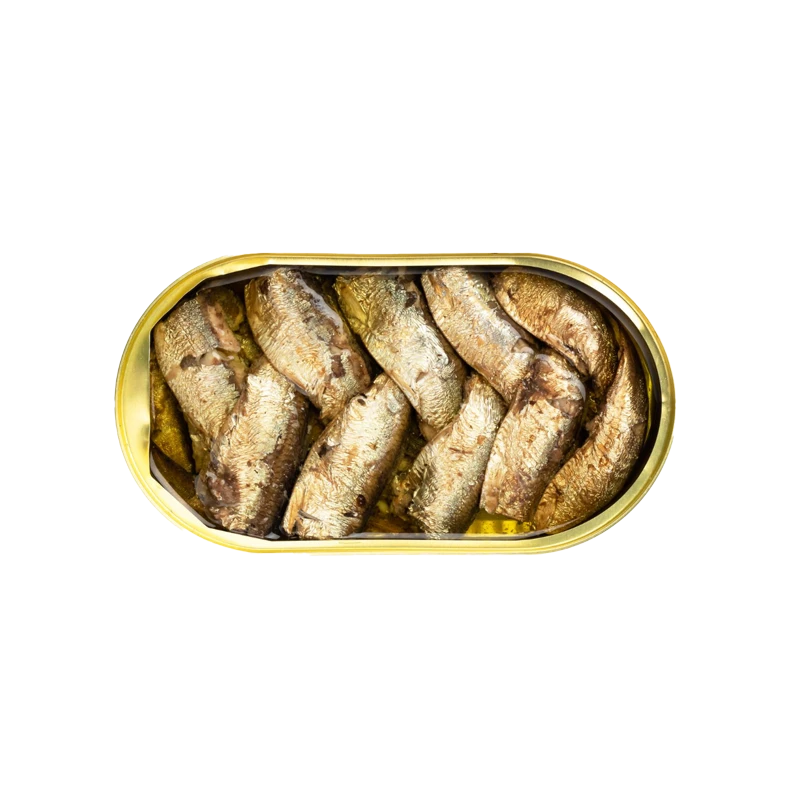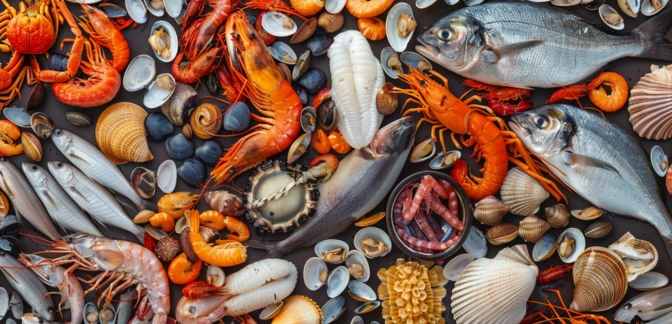Sardines — Nutrients, Health Benefits, and Shopping Tips

Written by Listonic Team
Last update on September 6, 2024
Sardines nutrients
Nutrition facts
Amount per 100 g
Calories
🔥 208 kcal
| Nutrition per: 100 g | Value | % Daily Value* |
|---|---|---|
| Carbs | 0 g | - |
| Fiber | 0 g | - |
| Sugars | 0 g | - |
| Glycemic Index | 0 | - |
| Protein | 25 g | 50% |
| Sodium | 505 mg | 21.96% |
| Total Fat | 11 g | 14.1% |
*The % of Daily Value (DV) tells you how much a nutrient in a serving of food contributes to a daily diet. 2,000 calories a day is used for general nutrition advice.
25 g
💪 High Protein Content
Sardines facts & tips
Health benefits
- High in protein, essential for muscle growth, repair, and overall body function.
- Rich in omega-3 fatty acids, which support heart health, reduce inflammation, and improve brain function.
- Contains essential vitamins and minerals such as Vitamin D, Vitamin B12, calcium, and selenium, which support overall health and well-being.
- Low in mercury compared to larger fish, making them a safer option for regular consumption.
- Supports bone health due to their high calcium content from the edible bones.
Health risks
- Potential for mercury contamination though typically lower than in larger fish, sardines may still contain trace amounts of mercury, which can pose health risks if consumed in large quantities, particularly for pregnant women and young children.
- High sodium content particularly in canned or processed sardines, which can contribute to hypertension and increased cardiovascular risks.
- High purine content which may increase the risk of gout or exacerbate gout symptoms in susceptible individuals when consumed in large amounts.
- Risk of allergic reactions in individuals with fish allergies, causing symptoms like itching, swelling, or anaphylaxis.
How to choose sardines
Sardines should be fresh with a shiny skin and bright eyes, indicating they have been recently caught. The flesh should be firm to the touch, and the fish should have a clean sea smell, not fishy.
Avoid sardines that appear dull or have a slimy coating, as these are indicators of age or poor handling. Sardines with a strong ammonia-like odor should also be avoided, as they are likely no longer fresh.

How to store sardines
Sardines should be stored in the refrigerator if they are fresh, kept in their original packaging or an airtight container. Refrigeration helps maintain their flavor and freshness for up to two days. For canned sardines, keep them in a cool, dry place until opened.
Exposing fresh sardines to air can cause them to spoil quickly. Avoid leaving them at room temperature, as this promotes bacterial growth. Always transfer canned sardines to a covered container once opened and consume within a few days for optimal quality.
✅ Extra Tip
How long do they last?
Sardines can last for 1-2 years unopened when stored in a cool, dark place. Once opened, they should be refrigerated and used within 3-4 days.
What to do with leftovers?
Leftover sardines can be used in a variety of savory dishes. Flake them and add to salads, sandwiches, or wraps for a flavorful protein, or mix them into a pasta dish with olive oil, garlic, and fresh herbs. Sardines are also great when used as a topping for pizzas or flatbreads, where their salty flavor pairs well with cheese and vegetables.
Use sardines in a spread or pâté by mashing them with cream cheese, lemon juice, and capers, perfect for serving on crackers or toast. If you have a lot of sardines, consider making a batch of sardine fritters by mixing the fish with breadcrumbs, eggs, and seasonings, then frying until golden. Sardines can also be added to a grain salad with quinoa, olives, and roasted vegetables, or used as a filling for stuffed vegetables like bell peppers or tomatoes. For a quick snack, enjoy sardines on their own with a squeeze of lemon, or serve them with crackers and pickles for a simple appetizer.
👨⚕️️ Medical disclaimer
Discover products from other categories
Listonic Team
Fact-checked
Our editorial team checked this article to make sure it was accurate at the time of publishing it.
Get the top-rated shopping list app on your phone!







